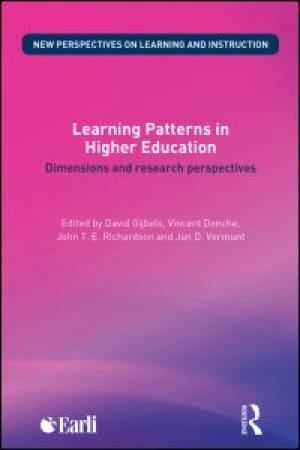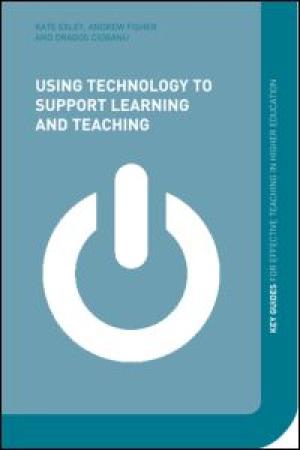Resources
An online workshop on constructivism. Includes overview, history, critical perspectives, expert interviews, demonstration, and more.
Colorful infographic on the flipped classroom from Knewton.com. Explains: What is the flipped classroom; How it came to be; What’s driving it; and What it looks like.
Article by Cynthia J. Brame. Defines and describes the “flipped classroom.” Discusses the theoretical basis and provides additional resources on “flipping” the traditional classroom space.
Excerpts from a post by Marilla Svinicki of University of Texas at Austin for the National Teaching and Learning Forum. Discusses some of the benefits of flipped classrooms. Argues that the flipped classroom is not easy or new. Hosted on Stanford University's Teaching Commons.

Click Here for Book Review Abstract: Learning Patterns in Higher Education brings together a cutting edge international team of contributors to critically review our current understanding of how students and adults learn, how differences and changes in the way students learn can be measured in a valid and reliable way, and how the quality of student learning may be enhanced. There is substantial evidence that students in higher education have a characteristic way of learning, sometimes called their learning orientation (Biggs 1988), learning style (Evans et al. 2010) or learning pattern (Vermunt and Vermetten 2004). However, recent research in the field of student learning has resulted in multi-faceted and sometimes contradictory results which may reflect conceptual differences and differences in measurement of student learning in each of the studies. This book deals with the need for further clarification of how students learn in higher education in the 21st century and to what extent the measurements often used in learning pattern studies are still up to date or can be advanced with present methodological and statistical insights to capture the most important differences and changes in student learning. The contributions in the book are organized in two parts: a first conceptual and psychological part in which the dimensions of student learning in the 21st century are discussed and a second empirical part in which questions related to how students’ learning can be measured and how it develops are considered. Areas covered include: Cultural influences on learning patterns Predicting learning outcomes Student centred learning environments and self-directed learning Mathematics learning This indispensable book covers multiple conceptual perspectives on how learning patterns can be described and effects and developments can be measured, and will not only be helpful for ‘learning researchers’ as such but also for educational researchers from the broad domain of educational psychology, motivation psychology and instructional sciences, who are interested in student motivation, self-regulated learning, effectiveness of innovative learning environments, as well as assessment and evaluation of student characteristics and learning process variables. (From the Publisher)
Learn about what active learning is and how to achieve it. This post provides five active learning techniques: just-in-time teaching, listening teams, structured sharing, students as teachers, and team quizzes.
Students learn better and retain more when they are directly involved in their learning, not just sitting back and being lectured. Usually, they also prefer active learning. Discover ways to help students learn in a more hands-on environment.
A concept map is a way to visualize knowledge or graphically represent an idea.
There has been a lot of buzz in higher education lately about the flipped classroom model for teaching and learning. It's not as easy as it appears, and it's not as new as others would have us believe.

Click Here for Book Review Abstract: The climate of Higher Education is changing rapidly. The students are more likely to see themselves as consumers and have increasingly high expectations regarding teaching and learning. Universities are in part aiming to meet this need by increasing the use of technology; for example, whether to increase access to teaching materials outside the classroom or to make lectures more interactive. Although there is no illusion amongst Higher Education intuitions that technology is a panacea, it is clear that technology is a vital tool in meeting expectations and one that will be used more and more. Consequently the context of this book is one in which technology needs to be understood as part of an overall teaching practice. Technology continues to move on a pace and is used increasingly within Higher Education to support and enhance teaching and learning. There are books which are steeped in technical detail and books which are steeped in theoretical pedagogy with little discussion about the impact on learning and student/teacher behaviour. Using Technology to Support Learning and Teaching fills a gap in the market by providing a jargon free (but pedagogically informed) set of guidance for teaching practitioners who wish to consider a variety of ways in which technology can enrich their practice and the learning of their students. It integrates a wide range of example cases from different kinds of HE institutions and different academic disciplines, illustrating practicable pedagogies to a wide range of readers. It is full of advice, hints and tips for practitioners wanting to use technology to support a style of teaching and learning that is also built on sound pedagogical principles. It will provide a quick user-friendly reference for practitioners wanting to incorporate technology into Higher Education in a way that adheres to their learning principles and values . This book is primarily for teaching practitioners, particularly those who are new to the industry.This book would also prove useful on training courses for practitioners; such as the Postgraduate Certificate for Higher Education. The authors also intend that the book be of value to newer teachers (perhaps taking teacher training programmes) who wish to see where recommended approaches link to pedagogy. (From the Publisher)